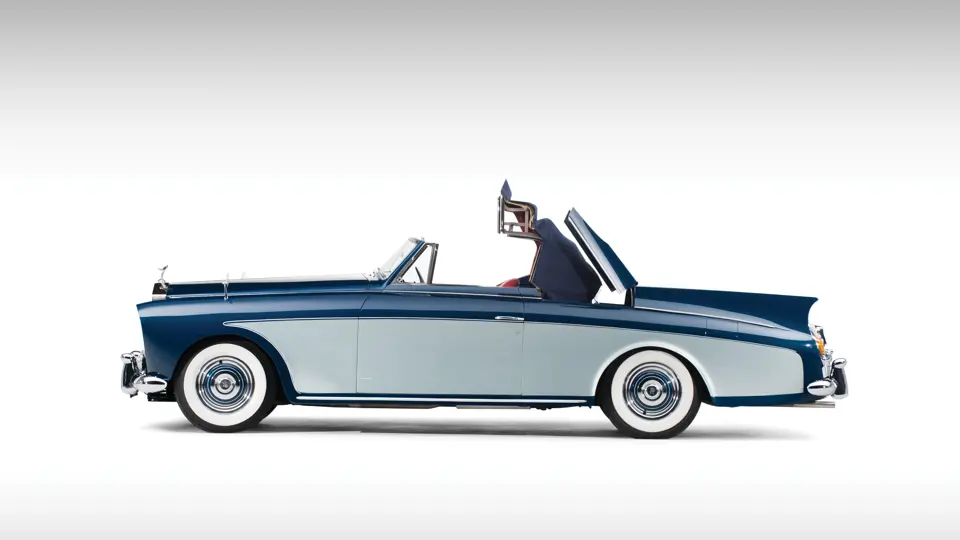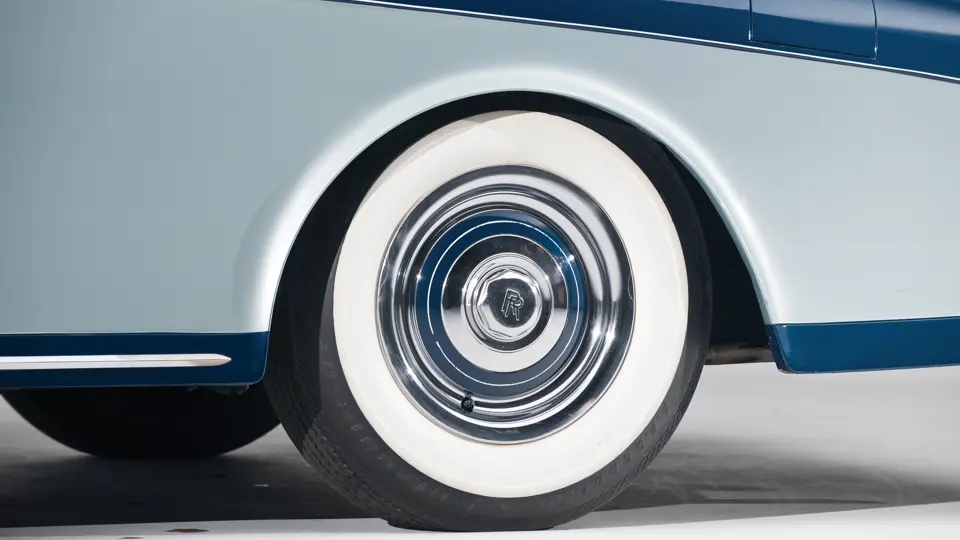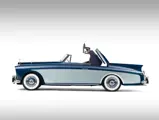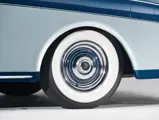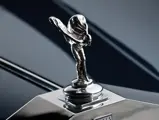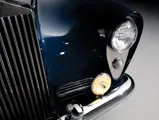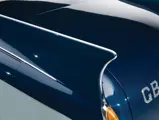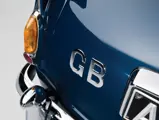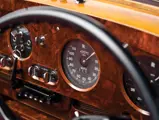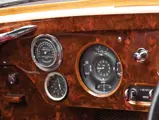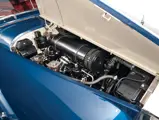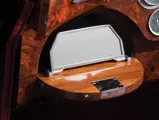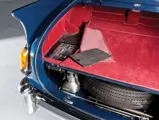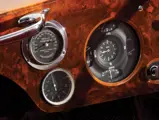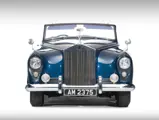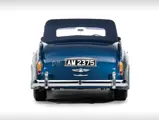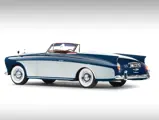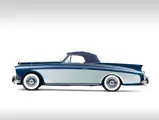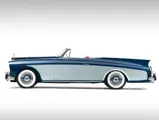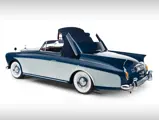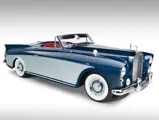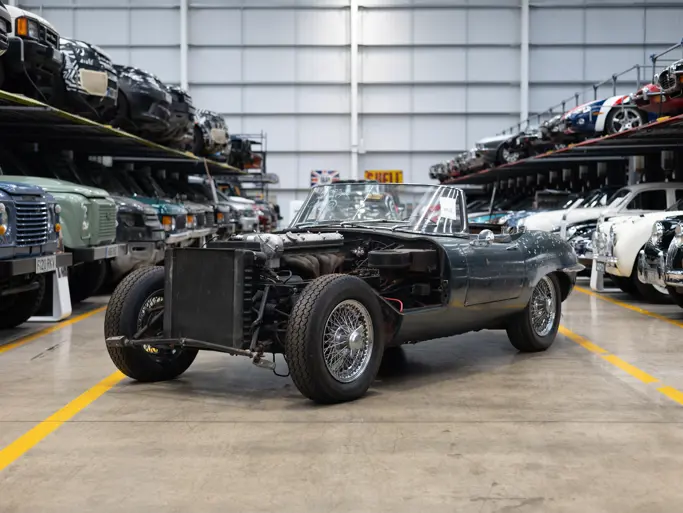178 bhp, 4,887cc F-head six-cylinder engine, two SU carburettors, four-speed Hydra-Matic automatic transmission, independent front suspension with coil springs and wishbones, semi-elliptic rear springs with electrically controlled shock absorbers, power-assisted steering, and power-assisted hydraulic front and hydro-mechanical rear drum brakes. Wheelbase: 3,124 mm (123")
• One of the rarest and most important post-war, coach built Rolls-Royces in existence
• Sensational original “finned” Freestone & Webb two-seater coachwork with disappearing top
• Christened the “Honeymoon Express” by design journalists at the Earl’s Court Show
• An unrepeatable opportunity; one of only two such Rolls-Royces built
• Only 42,070 original miles after three decades of single ownership
Aside from its breathtaking presentation, the Rolls-Royce we have the pleasure of offering here is exceptionally rare, as one of only one percent of all Silver Clouds to carry truly bespoke coachwork. The body was produced by the highly respected firm of Freestone & Webb and is one of just three with this radically-designed drophead coupé style, two produced for the Cloud I and a third on a Bentley S1 chassis. The firm was a design leader throughout its existence and is especially revered for its creations from the 1920s and 1930s, winning a Gold Medal in the Private Coachbuilders competition an astounding nine years in a row. Their workmanship on this particular chassis, SGE270, is second to none.
The first owner of SGE270 was Arnold Moreton of Manchester, England. A high-ranking Freemason; in 1976, Moreton was installed as Supreme Ruler, Intendent Ruler of the Lancashire Province Western Division and later became Deputy Grand Supreme Ruler, a position he held until his death in 1982. The rolling chassis was delivered to Freestone & Webb in London on 11 March 1958, and Moreton took delivery of the completed car on 16 June. Compared to the more typical four-seater drophead coupés, the Freestone & Webb “Honeymoon Express” truly represented out-of-the-box design. Whilst most mid-1950s Rolls-Royces had graceful, gently rounded side panels, the body sides of this car featured concave coves that stretched from stem to stern, with rear wings that feature aggressive vertical tail fins. Designed for only two passengers, the bucket front seats had a pair of fold-down armrests with adjustable seat backs. This limited seating capacity, which along with the ample boot, lent itself to the “Honeymoon Express” moniker, a name that stuck after design journalists first saw this style début at the Freestone & Webb stand at the Earl’s Court Show.
Finished in two-tone Lugano blue with Silver Chalice coves, chassis SGE270 possesses every convenience. Each door features a round pull-out ashtray. Another smoker’s tray slides out from under the original radio. A pair of cocktail cabinets flanks the rear storage area and each contains a cocktail shaker and four crystal whiskey tumblers. A tilt-up vanity mirror is fitted to the left-side cubby box door, and a pair of gallery posts front the driver’s side open cubby box, perhaps to prevent contents from slipping out on brisk acceleration. Power-assisted steering, along with power windows, was also rare for the time and fitted car radios were not common. This car retains its original Radiomobile “His Master’s Voice” medium- and long-wave radio with power antenna. The spacious luggage compartment is fitted with scarlet wool carpet and leather binding, and an extensive hand tool tray is tucked below the floor. All original road tools and the jack and inspection torch remain in place. Moreton also ordered a unique pair of gauges: an outside temperature thermometer and an altimeter. A tachometer is paired with the speedometer, which was rarely specified for the Silver Cloud.
The scarlet red Connolly leather interior and matching red carpets are fitted with British Wilton wool broadloom. Burled Circassian walnut veneers define the fascia, trim and window sills. Luxury aside, the most fascinating feature on this car is the hydraulic top. Metal flaps on either side “pop” open, along with the rear cover, and allow for the top to effortlessly rise. When lowered, the navy blue canvas power top disappears below the belt line, completely hidden under the electrically operated metal cover. With the top down, rear vision for the driver is completely unobstructed, unlike many European convertibles whose tops retreat to a rather bulky position under the canvas cover.
One must consider this Rolls-Royce then, in the context of its contemporaries. From the fins and coves of the bodywork to the extraordinary interior and upholstery, such design was not only daring in its day but unlike anything the average British motorist would have ever seen before.
Extensive records and original Rolls-Royce, Freestone & Webb and H. R. Owen chassis cards confirm this car’s provenance, as well as the presence from new of every single option. This unique car, like its siblings, is featured in archival publications, including Lawrence Dalton’s Rolls-Royce: The Elegance Continues, Graham Robson’s The Rolls-Royce and Bentley: Coachbuilt Models 1945–1985, Volume 2 and Rolls-Royce Owners’ Club, Inc., publication, The Flying Lady, issue 1964/5.
Bespoke motorcars like this one are valued like fine art, antiques and other rare commodities and will always be treasured. One of only two Rolls-Royce Silver Clouds produced with this exceptional drophead coupé body design, chassis SGE270 still carries its original engine, stamped SE385, with only 42,070 miles and even its original British registration plate, AM2375. This example has been in single ownership since it was brought to the United States when its first owner died in 1982. It has been meticulously maintained and offers many more years of enjoyment and appreciation for its next owner. Its place in Rolls-Royce history is assured, and its significance to enthusiasts is impossible to overstate, as this may very well be a once in a lifetime opportunity to acquire the Honeymoon Express.


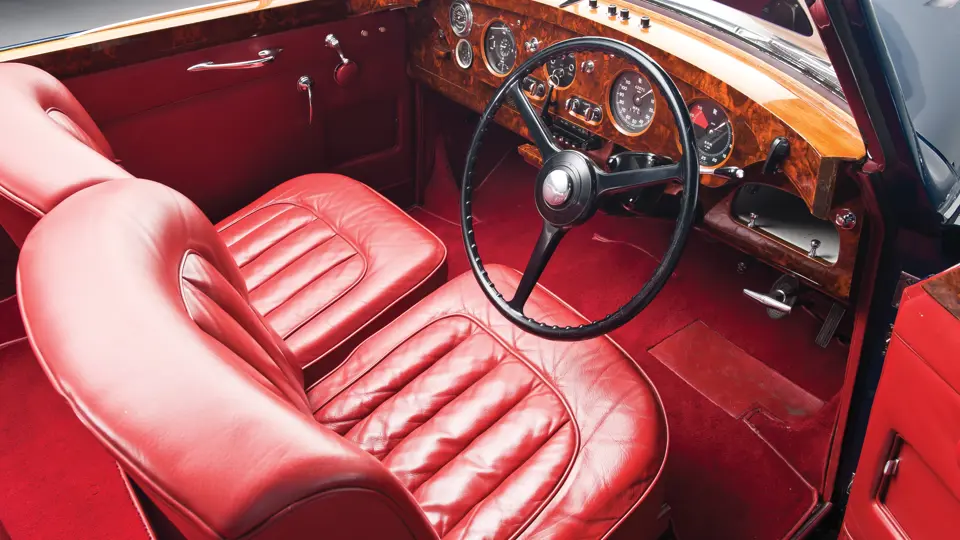

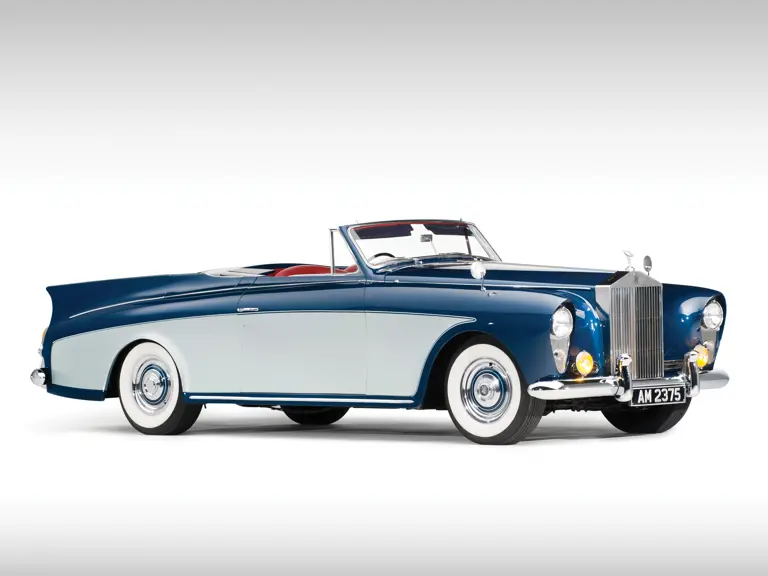

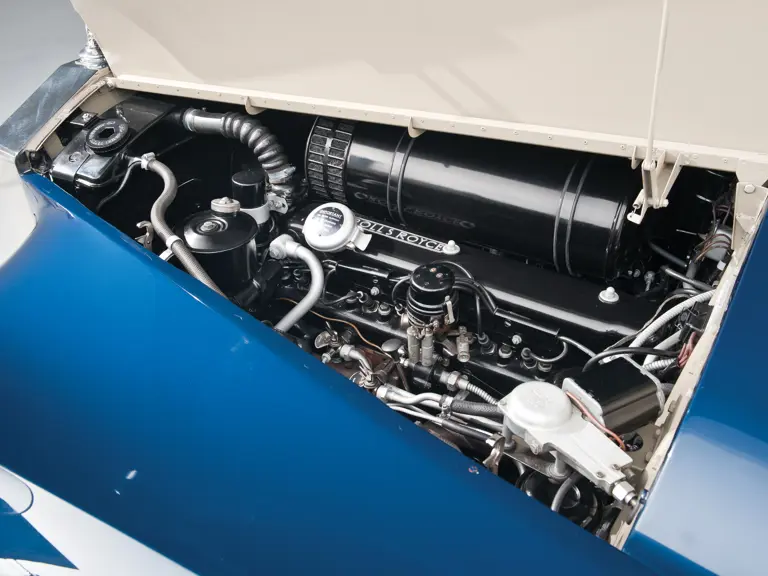
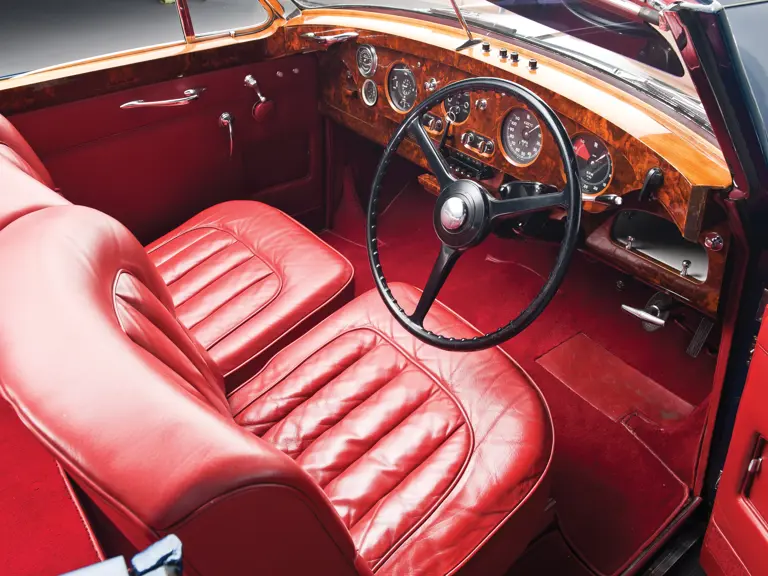

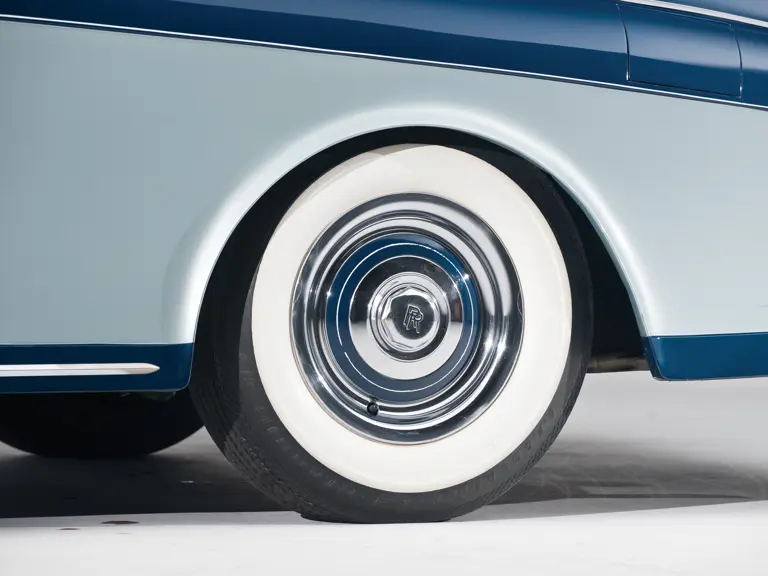
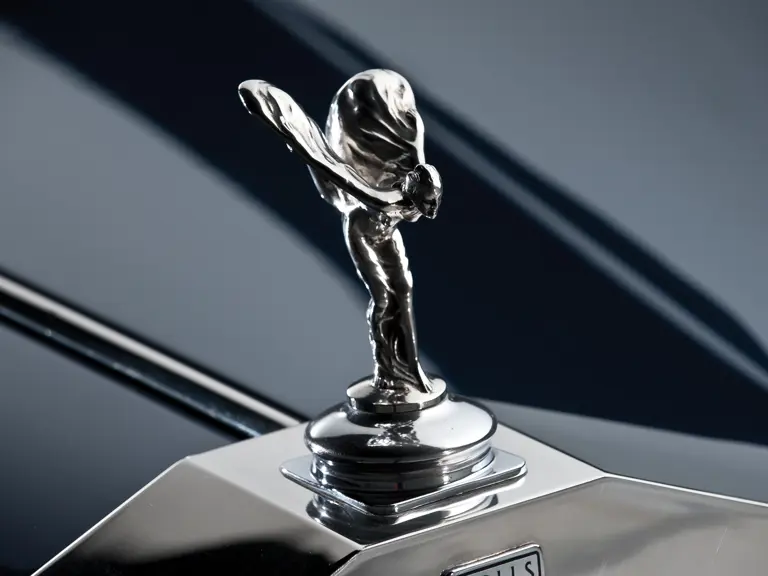
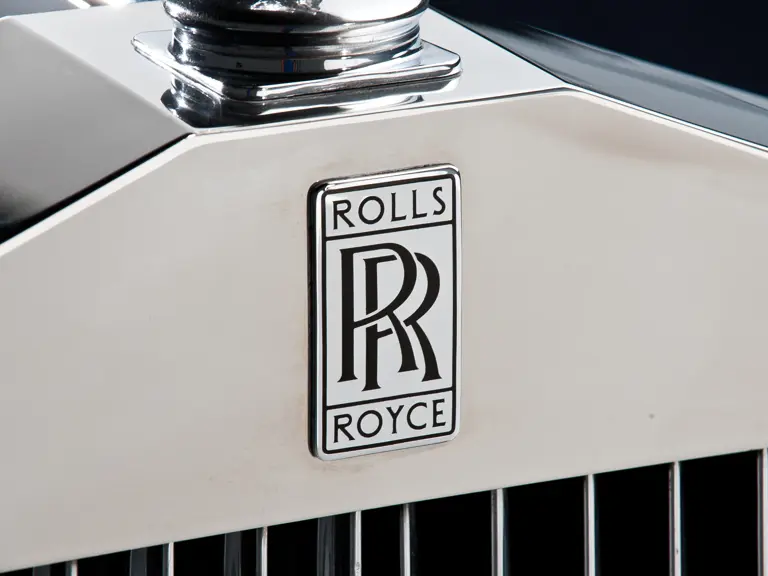
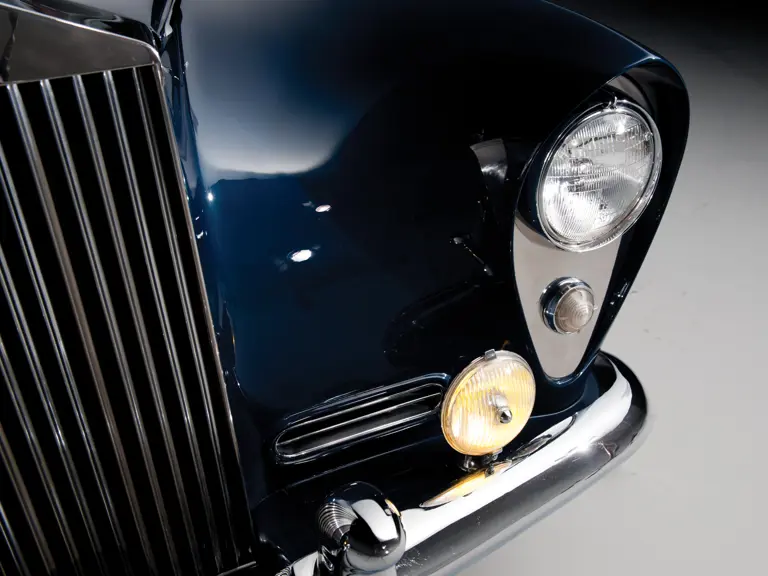

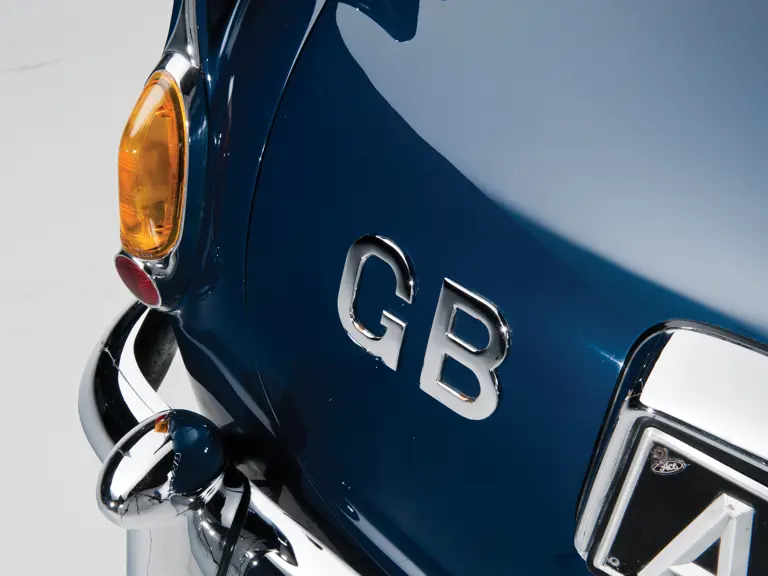
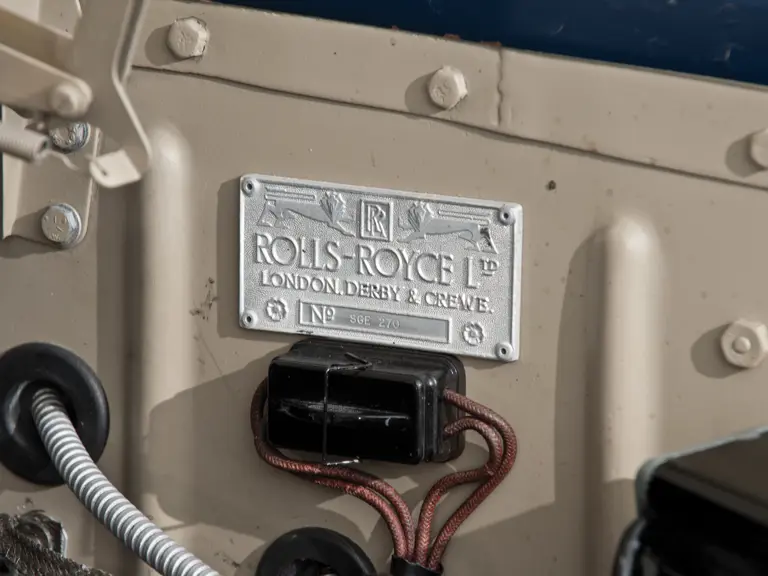
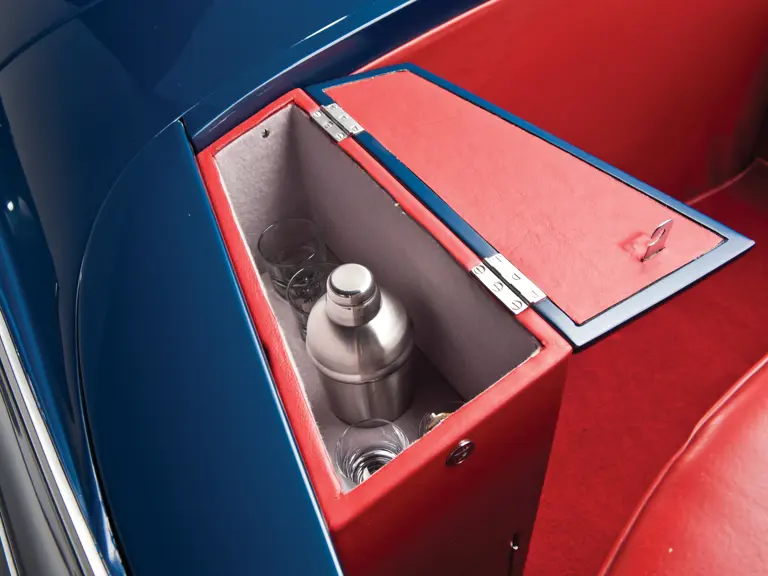
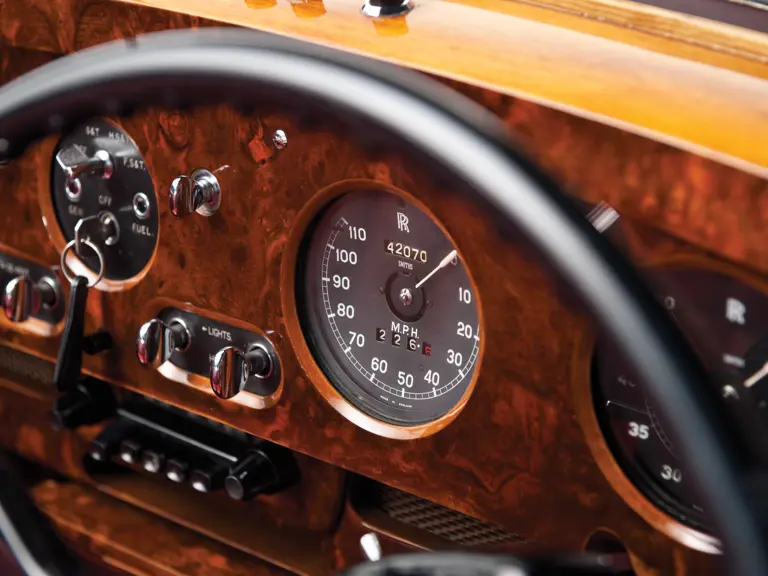
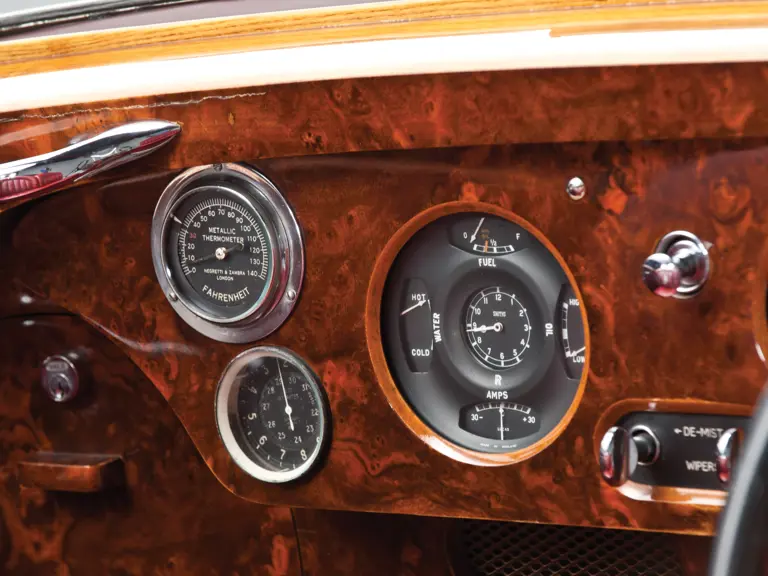

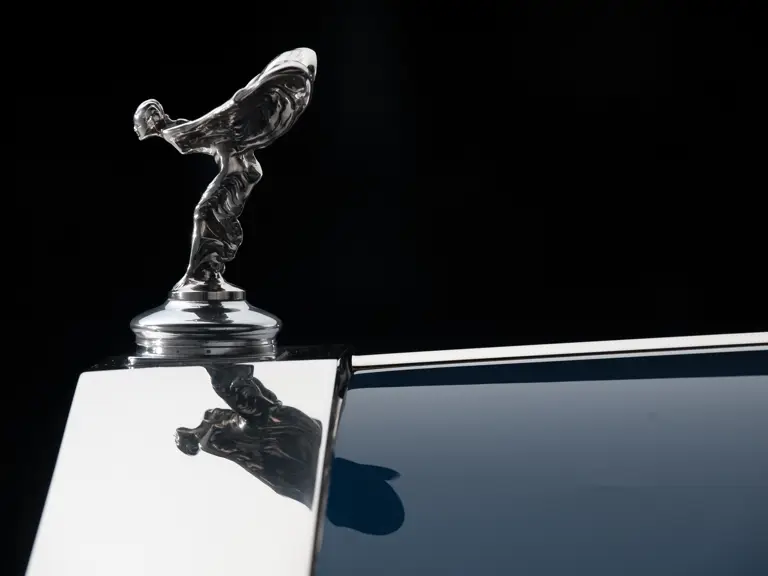
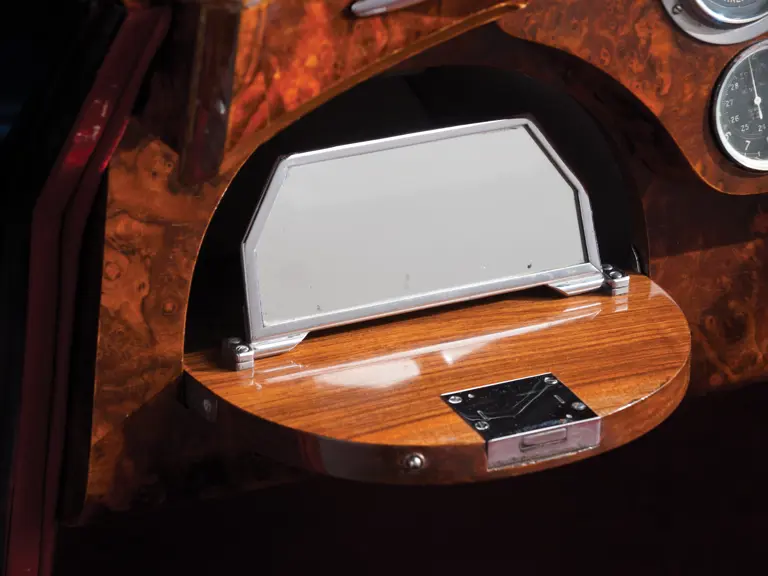
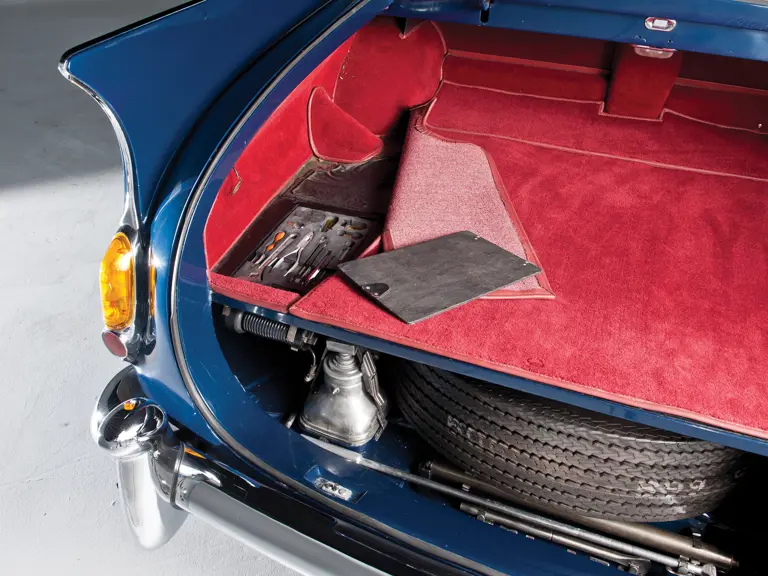
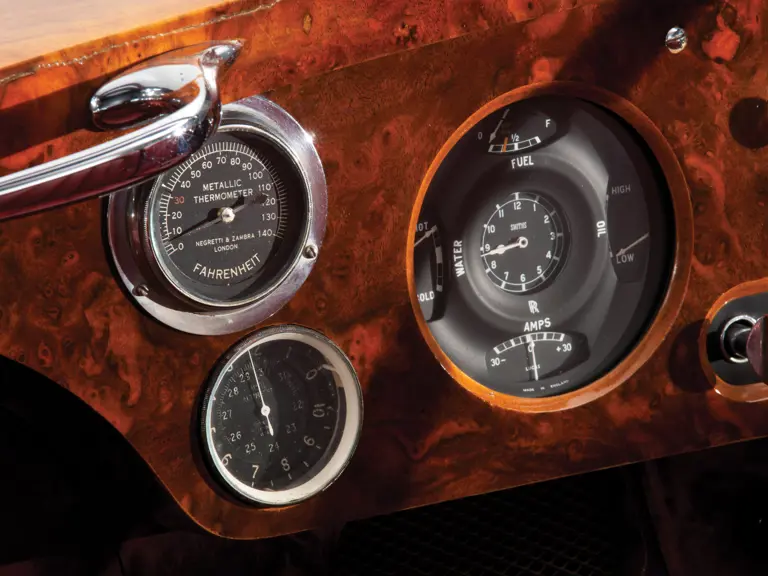
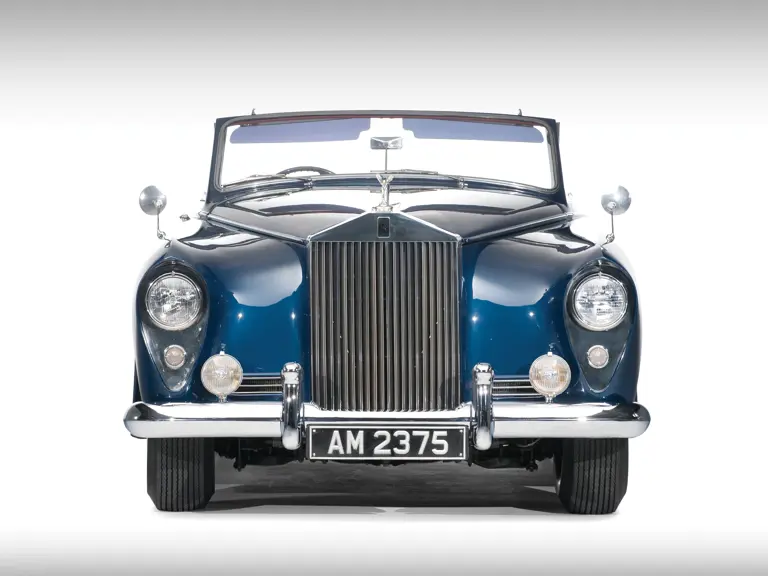

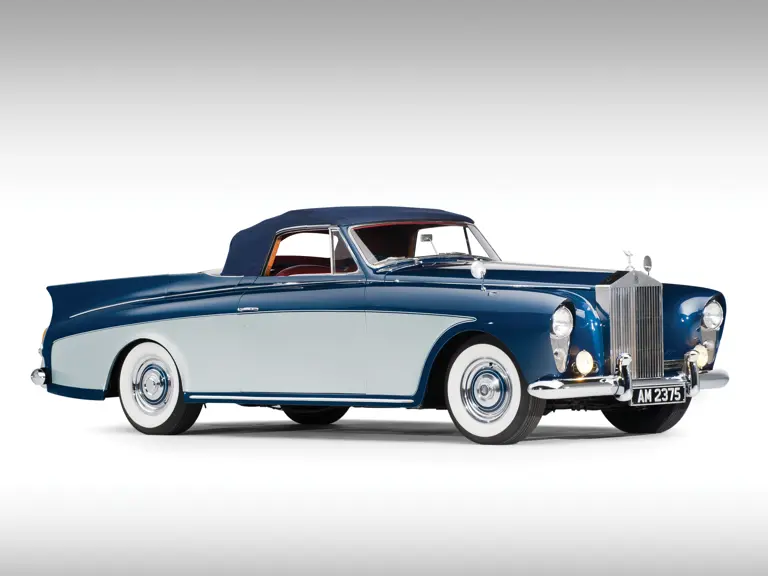
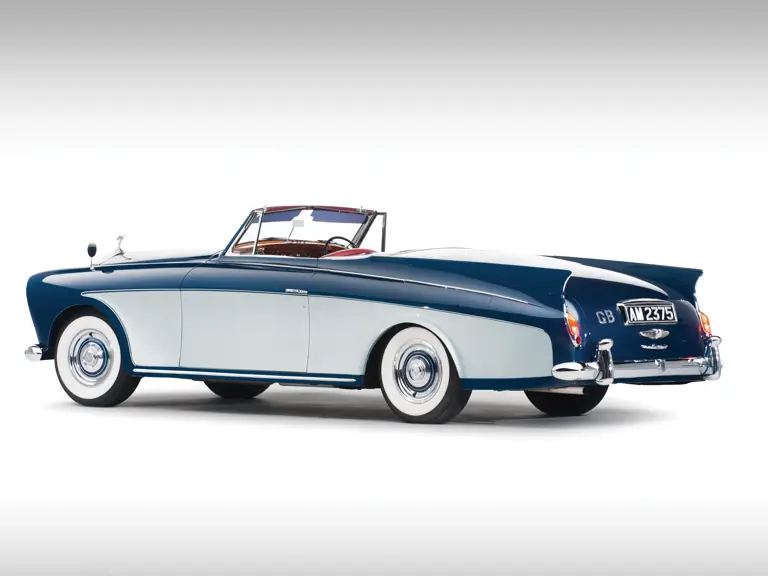
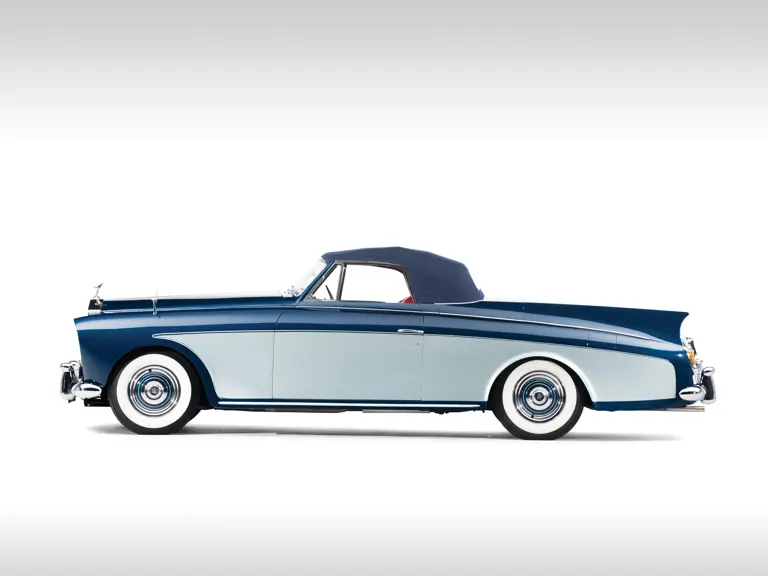
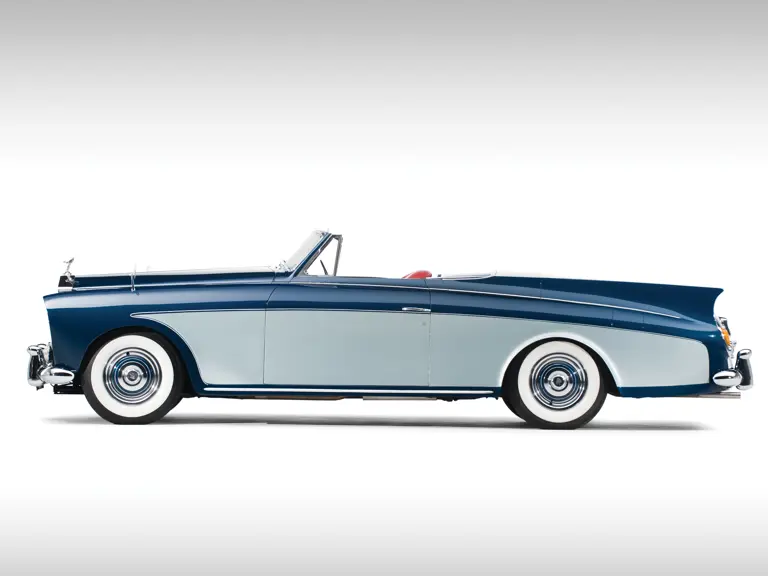
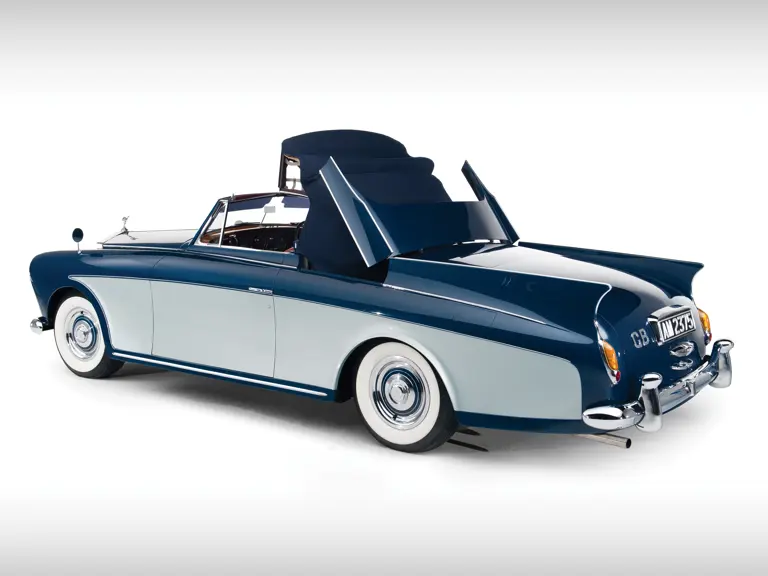
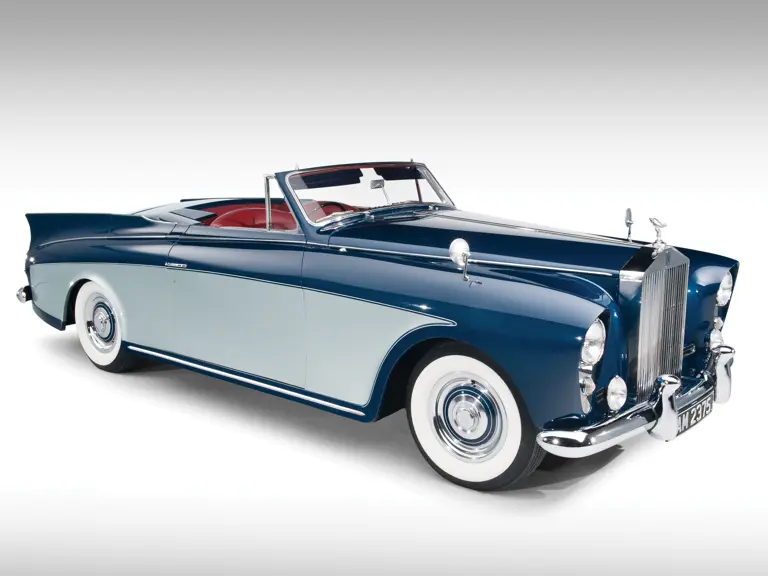
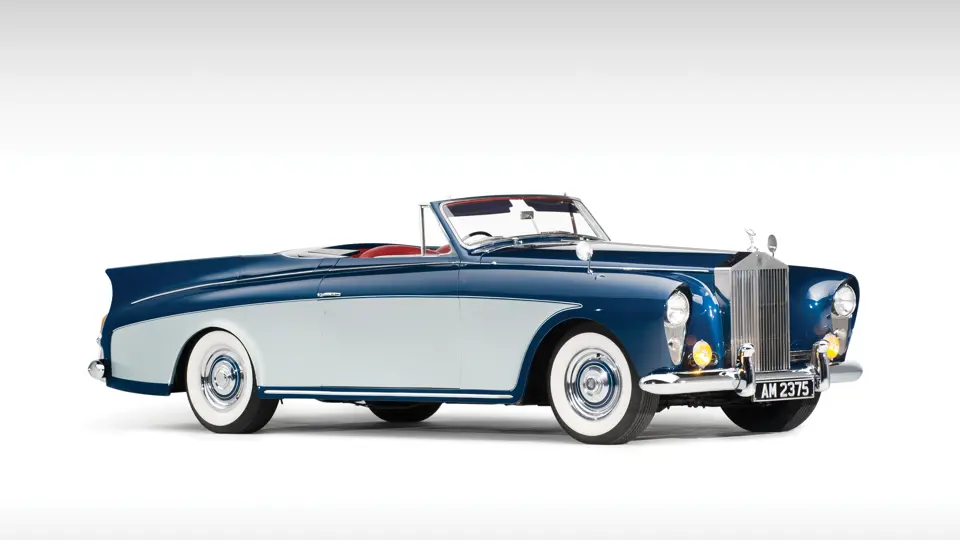
 | Monaco, Monaco
| Monaco, Monaco
